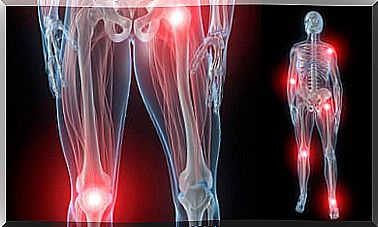Methanol Poisoning
Methanol is a colorless type of alcohol that is volatile at room temperature. It is also known as wood alcohol or burning alcohol. Its use is common in industry, laboratories and in the home itself, as it is found in many cleaning products, antifreezes, paints and varnishes.
Poisoning can occur accidentally by handling these products by inhalation. However, in Spain, the most common mode of intoxication is voluntary suicide.
In addition, there is a fraudulent use of this substance as a substitute for ethanol in clandestinely manufactured alcoholic beverages. They cause several people to become intoxicated at the same time, leading to an outbreak in the ER.
Methanol poisoning pictures are very rare. However, they carry a high mortality, between 26 and 50%. On the other hand, in cases where it does not cause death, it leaves a large number of neurological and visual sequelae, including blindness.
For all this, below we will tell you everything you need to know about methanol poisoning, its symptoms and what to do in case you or a friend or family member gets intoxicated with this substance.
What is methanol and where is it found?
As we have said, methanol is a colorless, volatile, flammable and non-drinkable type of alcohol. It is toxic to our body, unlike ethanol, which is in alcoholic beverages. It is obtained from the distillation of wood, although it can be synthesized from carbon monoxide or methane.
It is used to make, among others:
- Antifreeze: in car windshield washer fluid and in natural gas pipes.
- Solvents: used in industry to produce inks, resins, adhesives, and colorants. Also, as a solvent to make drugs for cholesterol, antibiotics, vitamins and hormones.
- Fuel for energy production.
- Food: Methanol occurs naturally in many foods such as fruits and vegetables. Methanol helps regulate human genetic activity and facilitates food metabolism. But the doses of these foods are very small and they are not toxic at all.
- Methanol serves to denature ethanol. It is used to prevent people from drinking ethanol products, such as mouthwash and fuel blends.
- During the production of alcoholic beverages or distillation, methanol can be produced. In licensed alcoholic beverages, methanol is below toxic doses, but it is not so in those made clandestinely.
- Aspartame: it is an artificial sweetener that, when digested in the body, becomes phenylalanine, aspartic acid and methanol. However, the amounts produced by digestion of aspartame are lower than the exposure likely produced by fruits and vegetables.
The dose at which methanol begins to be toxic is 100 mg / kg, which would be equivalent to about 30 milliliters of pure methanol. The toxic level in the blood is from 0.2 g / L. Although we have seen some foods have methanol, they are far from reaching the toxic dose.

Why is methanol not drinkable?
When methanol is ingested, it is absorbed from the intestine and into the blood. By itself, methanol is not toxic, although it can depress the nervous system, making us dizzy or sleepy. However, when methanol passes through the liver it breaks down into formic acid, which is a very toxic substance.
What does formic acid do in our body?
Our blood has a level of acidity or pH that has to be kept stable so that the cells of our body can function well. The range of this acidity has to be around 7.35-7.45. If it is less than 7.35 it means that the pH is low, that is, that the blood is more acidic than normal.
So if we have formic acid in the blood, the pH decreases causing the cells to stop working properly and die. This process is called metabolic acidosis and, if left untreated, it can be fatal.
What are the symptoms?
The onset of symptoms varies between 40 minutes and 72 hours, although symptoms usually appear in the first 12 or 24 hours. However, before this time, the person may suffer a kind of drunkenness from the methanol itself.

The symptoms and signs of poisoning, usually affecting:
- Central Nervous System : in mild or moderate intoxication, headache, dizziness, lethargy, incoordination to move or simply a state of intoxication similar to that of alcohol intoxication occurs. However, in severe cases seizures, coma, and brain edema may occur.
- Eyes : there are alterations in vision that present as blurred vision, photophobia and dilation of the pupils. Likewise, loss of vision and irreversible blindness can develop due to atrophy of the optic nerve due to the direct toxicity that formic acid has on the eyes.
- Gastrointestinal system: due to its irritant action, nausea, vomiting and stomach pain occur. Although, if it is not treated, the poisoning can affect the pancreas causing it to become inflamed and the liver.
- Other manifestations: in order to compensate for the acidity of the blood, the body tries to eliminate acid by expelling CO2, which produces acidic products. That is, you begin to breathe very quickly and difficulty breathing appears.
What to do about methanol poisoning?
If you think you may have ingested or inhaled methanol, you should go to the emergency room immediately. The same if a family member or friend has taken methanol to harm themselves. In the hospital, if no more than two or three hours have passed since ingestion, a stomach lavage can be performed to prevent the methanol from being absorbed.
However, it may be that we do not realize that we have been intoxicated, since methanol does not produce symptoms for 1 or 2 days. Although in these situations you would also have to go to the emergency room immediately, you will no longer use stomach lavage, but other treatments:
- General measures: stabilize the affected person by giving him bicarbonate so that he can increase the pH and decrease the acidity, hydrate him and give him respiratory support, folinic acid (to avoid ocular sequelae) and vitamins.
- Avoid conversion of formic acid to methanol in the liver: Ethanol uses the same enzyme as methanol to metabolize in the liver and has a much higher affinity. Therefore, to prevent methanol from using this enzyme and producing formic acid, ethanol is injected. You can also use a drug called Fomepizole that inhibits this enzyme, but it is very difficult to get and very expensive.
- Hemodialysis – cleans the patient’s blood of methanol and formic acid.
All these treatments have to be done quickly to avoid the consequences, especially blindness, and the death of the intoxicated person.









